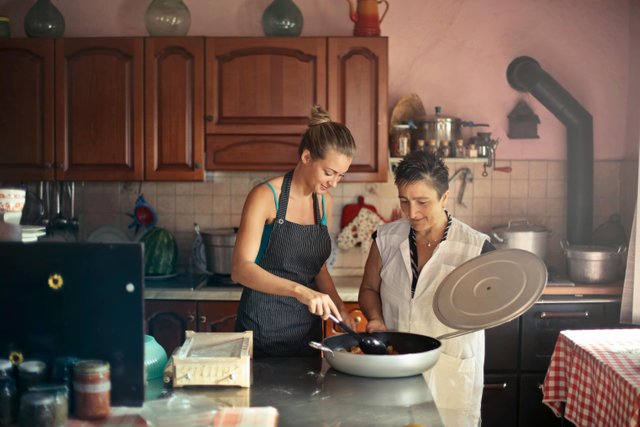
Cooking has always been more than just a way to fill the stomach; it’s an art, a form of expression, and, most importantly, a skill that brings joy to everyday life. Over time, I’ve learned that even the simplest techniques can revolutionize the way we prepare meals. Today, I want to share four essential cooking techniques that completely transformed my dinners.
1. The Magic of Proper Searing
Searing is a game-changer. I never realized how much flavor I was missing until I learned how to sear meat and vegetables properly. Searing is the process of cooking food at high heat to create a golden-brown crust. That crust locks in juices and adds a depth of flavor that’s hard to beat.
Here’s how I do it:
Preheat the pan: This step is non-negotiable. A hot pan ensures even browning.
Pat the food dry: Moisture is the enemy of a good sear. I use a paper towel to ensure the surface is dry.
Resist the urge to move: Once the food hits the pan, I let it sit. The temptation to peek is strong, but patience rewards you with a beautifully caramelized crust.
Whether it’s a steak, chicken breast, or even tofu, proper searing has added layers of flavor to my dinners. It turns ordinary dishes into restaurant-quality meals.
2. Mastering Deglazing for Sauces
After I learned the technique of deglazing, my kitchen creations went to the next level. Deglazing is the art of loosening and incorporating the browned bits left in the pan after searing. Those bits are flavor gold.
Choose your liquid: Wine, broth, or even water can be used.
Pour and stir: Once the searing is done, I pour a little liquid into the hot pan and scrape up the browned bits with a wooden spoon.
Let it reduce: I allow the liquid to simmer and thicken, creating a rich sauce.
Deglazing doesn’t just make a delicious sauce; it’s also an efficient way to avoid wasting flavor. A splash of white wine or chicken stock works wonders, making the simplest dishes taste luxurious.
3. The Power of Roasting
There’s something magical about roasting. It’s where minimal effort meets maximum flavor. I used to think of roasting as reserved for big meals or special occasions. That changed when I started roasting my weeknight dinners.
Here’s my go-to process:
Season generously: Olive oil, salt, and pepper are my essentials.
Use high heat: Roasting at 400°F (200°C) brings out the natural sweetness of vegetables and creates crispy edges.
Don’t overcrowd the pan: Spacing out the ingredients allows for even cooking and prevents steaming.
Potatoes, carrots, and even broccoli take on a whole new life when roasted. The natural sugars caramelize, creating a depth of flavor that steaming or boiling just can’t achieve. Roasting made my dinners heartier, tastier, and more satisfying.
4. Cooking Pasta the Right Way
I used to think cooking pasta was as simple as boiling water and tossing in some noodles. But I learned there are tricks to elevate even a basic bowl of spaghetti.
Here’s what changed for me:
Salt the water generously: It should taste like the sea. This step infuses flavor directly into the pasta.
Save the pasta water: The starchy liquid helps thicken and bind the sauce.
Cook it al dente: I’ve stopped overcooking pasta. Al dente pasta has the perfect texture and absorbs the sauce better.
Now, my pasta dishes taste like they’re from a fancy Italian restaurant. A creamy Alfredo or a hearty Bolognese always benefits from these small adjustments.
Emotional Connection Through Cooking
Learning these techniques wasn’t just about improving my meals. It’s also been about connection. The sound of a sizzling pan or the aroma of roasted vegetables reminds me of family dinners and cozy moments. These techniques bring warmth to my kitchen, making it a space where flavors and memories intertwine.
Tips for Beginners
If you’re starting your cooking journey, don’t be intimidated. These techniques might seem small, but their impact is profound. Start with one, practice it, and then add another. Before you know it, your dinners will feel effortless and taste incredible.
Conclusion
Cooking is about exploration and joy. These four essential techniques have changed the way I approach dinner. Searing adds flavor, deglazing makes use of every bit, roasting simplifies big flavors, and cooking pasta right elevates even the simplest meal.
The next time you step into your kitchen, try one of these techniques. Trust me—your dinners, and those who share them with you, will thank you.